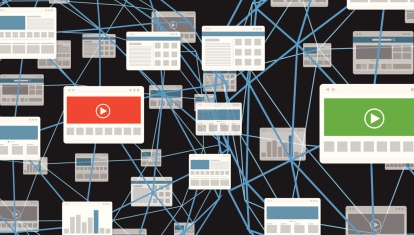marketing
Best Practices for a Successful Sales Enablement Software Implementation: Part 3 The Follow Up
When launching a new technology, almost every team faces challenges and roadblocks.
Some of the most common challenges you’ll face in every stage of the process are:
- No sense of urgency to migrate from old tools or processes
- Disconnect or lack of communication about the strategic benefits of the new technology
- Active resistance or push back from naysayers
This 3-part series is designed to help you navigate some of the most common challenges that can sink a successful implementation. In part 3 we’ll focus on the ways to combat these challenges as they manifest during the follow up phase of your implementation.
Share the good news
Once your users start using the system, be sure to communicate any immediate organizational benefits. Publicizing quick wins and promoting positive impacts on the business is a great way encourage adoption and show your users that you appreciate their flexibility and contribution.
For example, if you are rolling out a SAM tool, share increases in content usage to celebrate the improved accessibility. Or when implementing a CRM or other tool that may require data entry, share statistics or relevant reports to celebrate improvements to pipeline visibility and forecasting.
Incentivize
Make it Routine. If it can be avoided, you don’t want to penalize users for not using your tool, but you do want to communicate that the tool is expected to be used. An effective way to accomplish this is to find ways to incorporate the tool into an already required routine. This tacitly raises the cost of not using the new tool, without directly making it mandatory or required. For example, if you just launched a new sales-tracking technology, begin asking for numbers in your weekly management meetings. Of course, there may be other ways to get the data, but it would much more efficient to just use the provided technology. Another example, if you are implementing a new SAM solution, set a target date to shut down any older repositories to ensure that assets are centralized and your users are forced to enter the new system to access what they need.
Incentives V. Penalties. Compensation, perks, recognition; incentivizing your technology (in addition to communicating its value offer) is a great way to facilitate growth in adoption rates. However, it’s important not to get carried away with gamification so that you don’t have employees manipulating data or usage.
Another effective method of incentivizing is utilizing penalties. Penalizing should always be treated as a “last resort” option because the natural reaction to anything mandatory is to resist it. However, sometimes it is a necessary evil. A common penalty for mandatory SE systems is to hold commission until the desired action has been completed in the system (ex. No commission on opportunities unless there is a closed record in CRM).
Keep new tech visible
Not to beat a dead horse, but err on the side of over-communicating. We’ve already discussed several ways to keep your new technology front of mind during the ramp up and roll out (such as communication campaigns, user community forum), but it’s important not to let these initiatives fall off once you’ve hit your initial adoption goals.
Users and their needs evolve. As you introduce new technologies, new needs and use cases will present themselves. It’s important to keep the tool visible and the channels of communication open so that you can work proactively with your user community.
Here are a few more examples of ways you can keep your new tech a visible topic of conversation:
- Create a poster campaign that highlights key events in the adoption process such as refresher trainings, company benchmarks, and progress communications
- Host quarterly feedback forum initiatives (either meetings, focus groups, polls, chat rooms, etc.)
- Host lunch-n-learns and/or socials that provide employees with top user tips and a relaxed atmosphere for a Q&A session
- Create rewards programs for active users
- Create mentor programs between super users and struggling users
- Highlight success cases in which power users were successful in using the technology
- Set benchmarks and milestones so you can measure success and communicate it out to bolster adoption
Read the rest of the series:
Best Practices for a Successful Sales Enablement Software Implementation: Part 1 The Ramp Up
Best Practices for a Successful Sales Enablement Software Implementation: Part 2 The Roll Out











